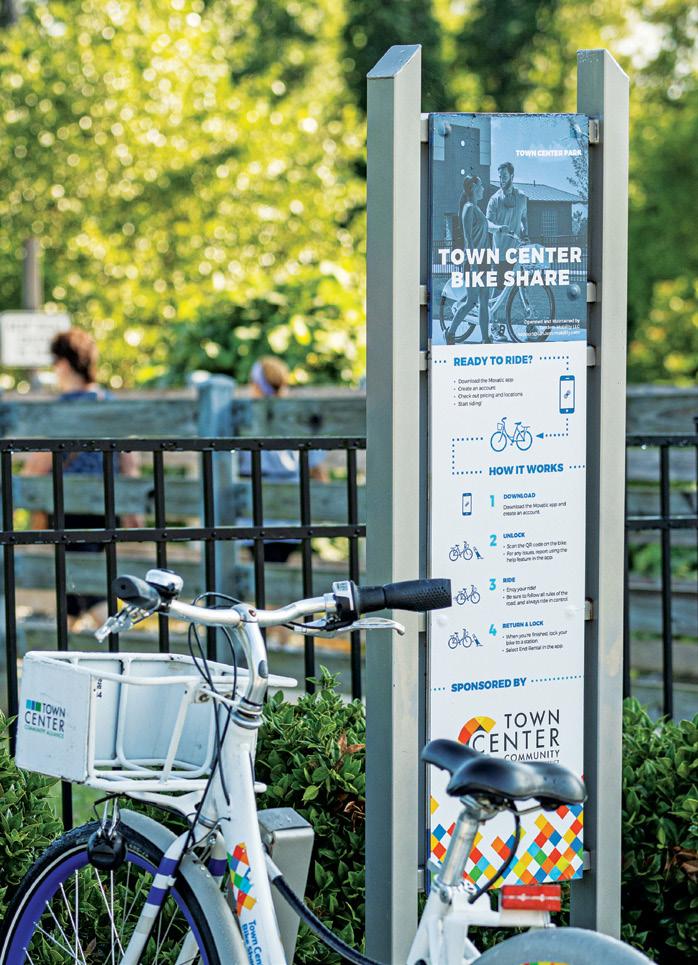
19 minute read
EDUCATION
North Cobb Christian School
Looking For A Better Fit
The pandemic pushes some parents to choose private schools.
By Cory Sekine-Pettite
Since the earliest days of the pandemic in 2020, when it was clear that schools across the country would be closed for the year — and that all students would have to adapt to online learning — many parents determined that full-time, at-home education wasn’t the best option for their family.
As Forbes reported this past June (https:// bit.ly/3z7k20N), parents saw and heard how different private and public schools handled educating kids at the start of the pandemic, and they weren’t always pleased with what they saw in the public realm. Additionally, the article stated that private schools largely went back to in-person learning at the beginning of the school year last fall, while public schools remained closed or opened with a hybrid model. “While remote learning during COVID-19 was definitely better than nothing, many parents also found they couldn’t handle the uncertainty about it all, or the potential for having to homeschool their kids while also trying to work,” reported the magazine’s Robert Farrington.
According to a report from EdChoice (an American education reform organization) earlier this year, 41 percent of parents were more likely to prefer a private education for their children post-pandemic. Overall, private school enrollment doesn’t quite bare out this preference on a national scale, but many private schools have reported increased registration this year — including some in Cobb County. We spoke with two schools (Brookwood Christian and North Cobb Christian) about their growth.
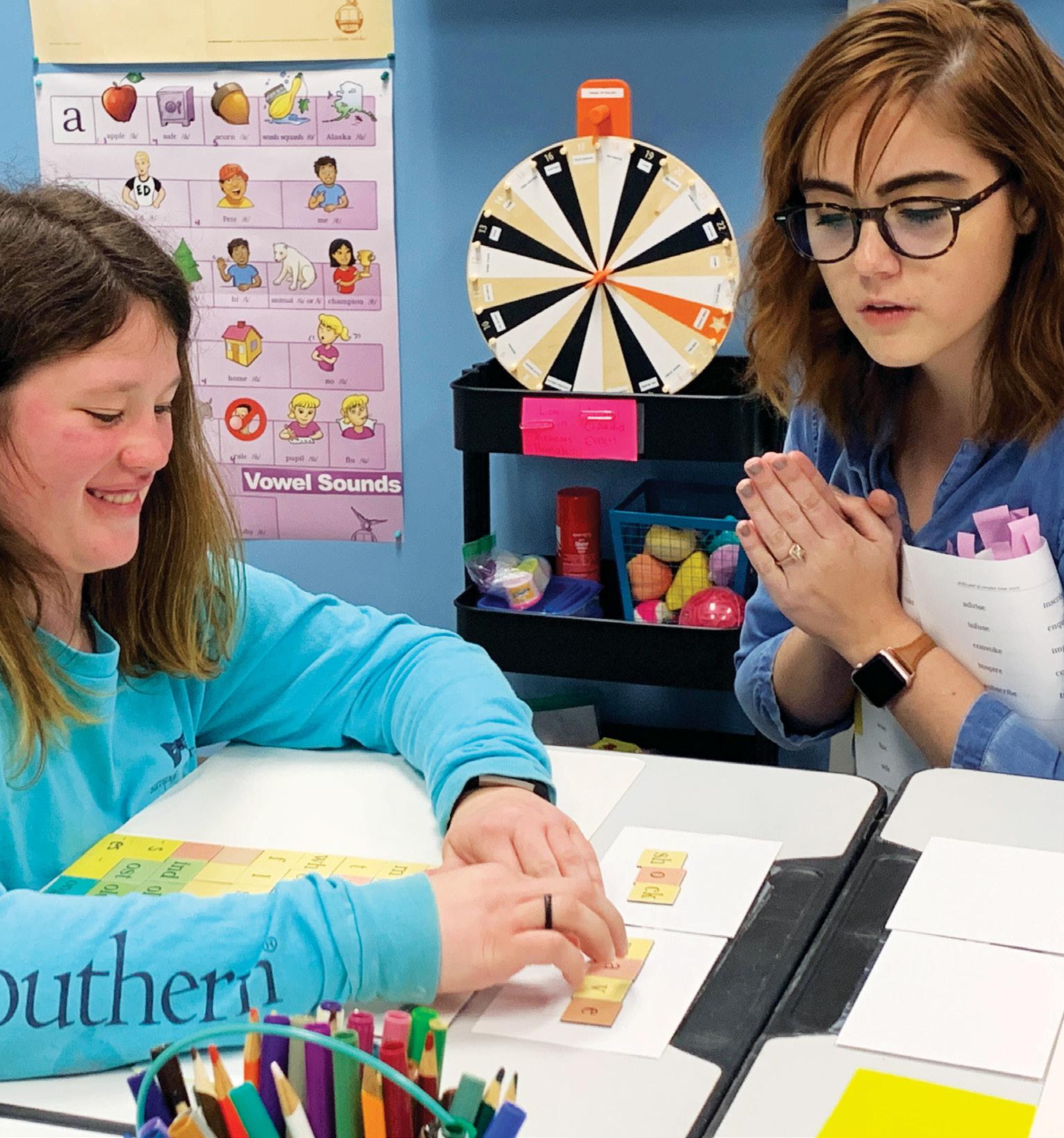
Brookwood Christian School
Compared with the last school year, Brookwood Christian has seen a 23-percent increase in student enrollment. To help with that increase, the school added three teachers to keep its class sizes small. “Enrollment has increased at Brookwood Christian School this year because parents have seen at home with their own eyes how much their children are struggling in school,” says the school’s Director, Kim Wigington.
The non-profit Brookwood (located at 4728 Wood Street in Acworth) caters to students with learning disabilities in reading and math. It is one of the few schools serving dyslexic students in the metro Atlanta area, and one of only two schools that serve high school students. “Online schooling is great for a small percentage of students, but not for all students and certainly not for students with learning disabilities,” Wigington said. “I think the pandemic put a spotlight on education in general, and our parents began to see that neither the online classes nor the traditional setup was working for their kids.”
The school offers specialized teaching methods, such as the Wilson Reading Program (using Orton Gillingham principles) by teachers who are certified in Wilson. Brookwood’s math program reads the text to the students so they do not have to be fluent readers in order to succeed in math. “Our class sizes are eight students or less,” Wigington said. “Students have art, nature studies, and time outside. We don’t forget to support the parents either. Each building has an administrator whom parents can call with questions and needs.”
Most parents who choose Brookwood do so because they know someone whose child thrives at the school, Wigington said. As parents started to talk to their friends about the difficulties in public schools last year, they realized what a different experience our students were having, she added. Since August of last year, Brookwood has held in-person classes five days per week. The school has taken all precautions and followed CDC guidelines. “We have increased time outside and created outdoor classroom space,” Wigington said. “Our school day and facilities are built around the needs of bright students with learning disabilities. We even have multi-age classrooms where students are grouped more by reading level than by age.”
Wigington says about half of Brookwood’s students come from Cobb County. The other half come from Bartow, Paulding, and Cherokee counties. Most of them come to Brookwood from public schools. She added that if growth continues, the school may be able to add a new, separate building to house its middle school students. Currently, the school’s elementary students (first through seventh grade) have their own building, as do the eighth through 12th graders.
Director Wigington recognizes that we are witnessing a fundamental shift in our education system. She knows that everyone involved is adapting as best they can. And while the students at Brookwood Christian are thriving, Wigington knows that not every family is able to send their children to such a school. “Our students are the kids who fall between the cracks in a traditional school,” she said. “They don’t fit in the
Brookwood Christian School
special education classroom, but they are not succeeding in the regular classroom either. Of course, not everyone has the luxury of private school; private schools are expensive. There is a bottom-line cost to educate each student, and not everyone can afford it.
“For this reason, we accept state scholarship sources, private and foundation grants and donations, as well as local fundraising to make the tuition as affordable as possible to families who need the financial assistance,” Wigington continued. “It costs money, but we are resourceful and conscientious about spending and budget so much that we have the lowest tuition in the area among schools offering similar services.”
North Cobb Christian School
North Cobb Christian School (NCCS) provides families with a unique K3 through 12th-grade education option that puts children’s cognitive, emotional, social, and spiritual needs at the forefront. NCCS challenges students academically, fosters them spiritually, and guides them to discover their God-given purpose and abilities. The school prides itself on being a close-knit community with caring teachers, more than 50 athletic teams and 17 performing arts ensembles, schoolwide weekly chapel, annual retreats, Spring Term trips for middle and upper school, and five Upper School Academies (magnet programs) that allow students to develop their full potential to impact the world for Christ.
North Cobb Christian’s Head of School, Todd Clingman, says many of the parents who have come to the school in the past two years say they had been considering NCCS for a long time. Factors surrounding COVID and current world events were the final encouragement they needed to make the switch for their children. “Parents are currently looking for an educational partner for their children that they can trust, whose position and stance on world events supports their own convictions,” Clingman said. “Parents who are looking for trustworthy and transparent school leadership that prioritizes biblical principles while providing an excellent education for their children have found that in NCCS.”
The real win for NCCS is that nearly all the students the school gained last year stayed this year, he continued. Some came due in part to COVID, but they are all staying due to the positive school culture. “We originally came to NCCS due to COVID and the public school’s COVID policies, so in a way I am thankful for the craziness of last year, as it led us to NCCS,” said Kristen Johnson, an NCCS lower school parent. “We choose to stay, however, because of the God-focused approach to all things. I was so impressed with the school’s leadership through the chaos of last year. I saw the school navigate some very difficult situations, yet always approached each one with integrity, transparency, and in seeking God for wisdom and direction. We are so grateful for the opportunity to send our daughter to a school that prioritizes and believes in the power of prayer, that seeks God first in all things, and is unashamed to stand up for what is right and true according to God’s Word.”
While in-person learning has been the focus, NCCS has responded to our new reality with flexible options for students when needed. According to Clingman, in response to parent and faculty feedback and in alignment with guidance from the Georgia Department of Public Health, the school is promoting health and wellness while bolstering NCCS’ nurturing culture and prioritizing the mental health and developmental needs of its students. “We are emphasizing in-person learning and also providing video recordings of all core subjects for fifth through 12th grades each day, so students who need to quarantine or stay home can
— Todd Clingman, Head of School, North Cobb Christian School
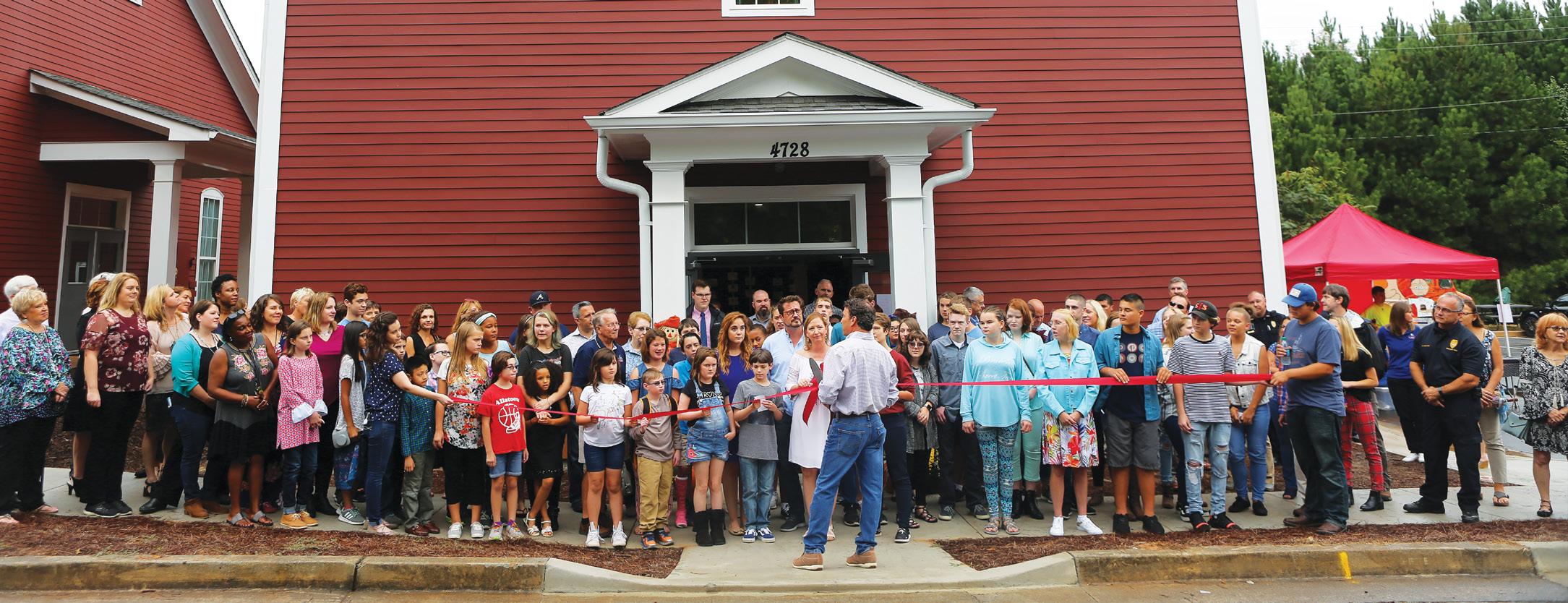
still benefit from direct instruction,” he said. “Younger students who need to participate in at-home learning work with their teachers to implement an individualized learning plan.”
The school has more than 1,000 students for this academic year, up from less than 900 students two years ago. Clingman said most new students came from public schools. “NCCS has a strong reputation in the community for being authentically Bible-based, as well as for having very robust programs for academics, arts, and athletics,” he added. “We have gained many families who are looking for strong student opportunities, as well as alignment with their Christian values.”
The growth at NCCS continues. The school opened a new, 38,000-square-foot upper school facility this past December, which includes a STEM center with a robotics lab, physics lab, and makerspace, as well as student collaborative spaces, classrooms, offices, and an adjacent parking lot. Clingman said this upper school addition, in turn, opened space for the lower and middle schools to expand across existing facilities. Other recent additions to the 50-acre campus include a renovated main building, updated athletic facilities, and new turf for the Jacob Dennis Football Field. Additionally, NCCS is constructing a security guardhouse, which will open this fall. North Cobb Christian also is preparing to launch the second phase of its Upper School Building campaign, which will add an additional 27,760 square feet to the new facility, including a student-run coffee shop, chorus room, flex classroom space, kitchen and additional student dining room, state-of-the-art biology and chemistry labs, and dedicated upper school space for the Dr. Carolyn Ware Moving Forward Program, which provides academic support. “Above all, we are a family,” Clingman says. “The number-one comment we receive from parents and students alike is that NCCS is a true, genuine family. NCCS feels like home.” n


Business Computers Media Health Technical
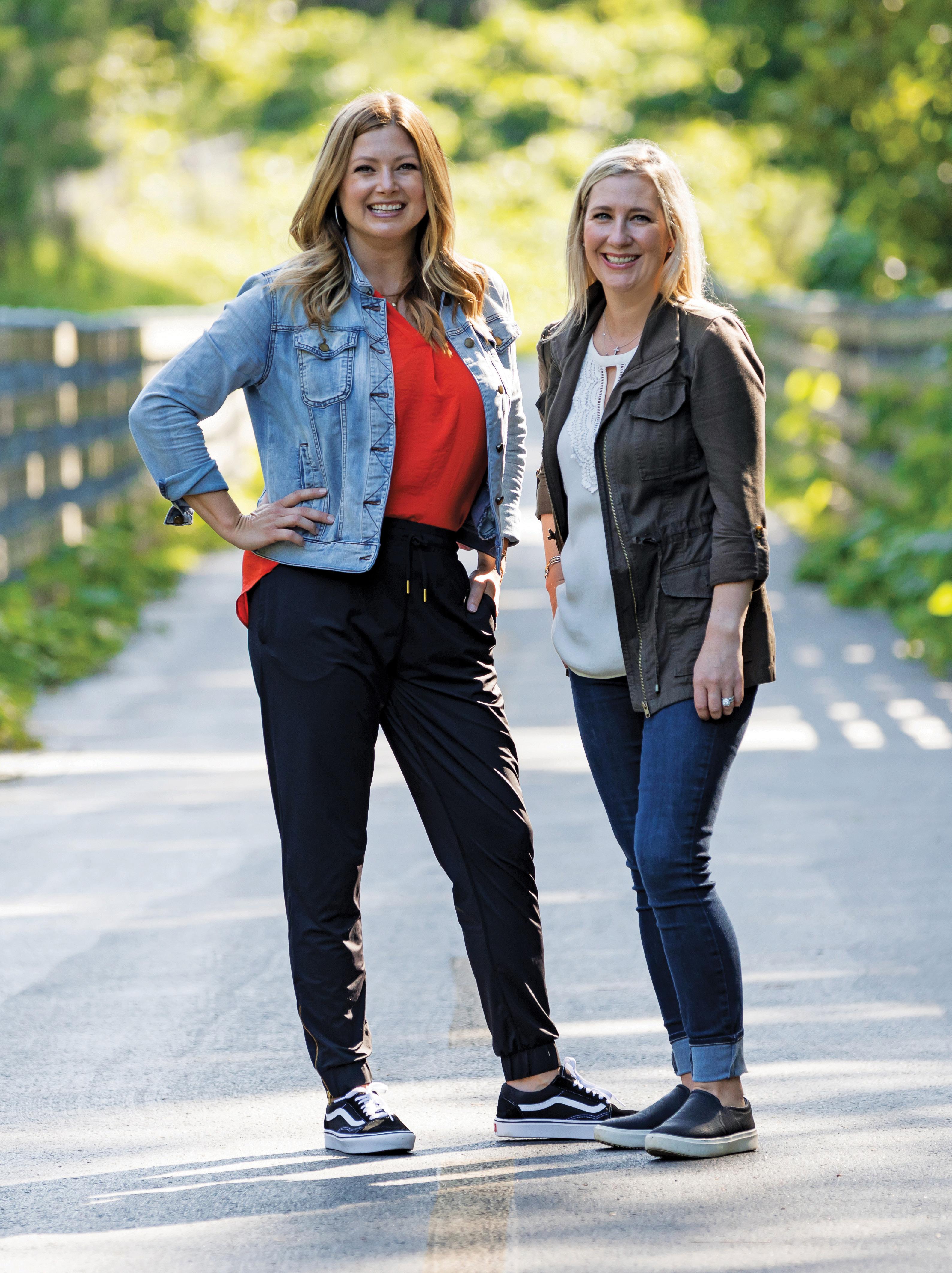
A Partnership That Enriches Cobb
The Town Center Community Improvement District and Town Center Community Alliance are helping to shape our county’s future.
TCCID Executive Director, Tracy Styf (left), and Town Center Alliance Director, Jennifer Hogan, are creating spaces and places where people want to be.
By Jennifer Morrell
If society has taught us anything, particularly through the pandemic, it’s that “stronger together” is a concept worth adopting. The Town Center Community Improvement District (TCCID) is a shining example of a robust CID in action, especially when joining forces with the Town Center Alliance (the Alliance), resulting in an enhanced level of success.
The role of a CID is to identify and fund projects such as infrastructure improvements and “quality of life” developments that enhance property values within the district. A quality of life project can vary from greenspace and parks to public art and bikeshare.
These types of endeavors typically use infrastructure and public space to provide a sense of “place” and opportunities to enjoy the environment, recreation, education, culture and community programming.
CIDs are funded by an additional, voluntary property tax on commercial properties within a specific district. In Town Center, 275 property owners with nearly 500 parcels generate approximately $3.7 million annually that goes back into the community. The
TCCID employs five full-time staff members who work for both the district and the Alliance.
The Alliance is funded through a variety of private, corporate, and foundation supporters by way of memberships, grants, and major gifts. It is a tool in the toolbox of the TCCID with a proven track record of success.
Photo by LaRuche Creative
Stronger together: TCCID and the Alliance
Since its inception in 1997, the TCCID has worked to identify and invest in projects for beautification, recreation, greenspace, and other general community enhancements. These include gateway markers, trails and a bikeshare program, all with the goal of improving the environment and quality of life for the Town Center community.
“In 2015, the TCCID created the Town Center Alliance, a nonprofit organization to partner for creative placemaking programs,” says Tracy Styf, TCCID’s executive director. “The collaboration allows engagement of a broader community and an increased investment in quality of life projects. The partnership and structure are unique, since not all CIDs have a nonprofit creative placemaking entity.”
The Alliance is designed to take a strategic look at creative placemaking elements that will help the TCCID reach its vision of becoming one of the most accessible, prosperous, and exciting areas in metro Atlanta. While the TCCID primarily builds roads, trails, sidewalks, and bike lanes, the Alliance finds ways to celebrate the unique character of Town Center.
“From public art and aesthetic fixtures that inspire and engage, to small parks that protect and conserve, the Alliance invests in projects that enhance the quality of life in the Town Center area,” says Jennifer Hogan, director of the Alliance. “By activating the physical and social environment in Town Center, the Alliance helps attract businesses and residents, boost economic development, and shape a sense of community. The Alliance team enlists the public,
community partners, and corporate sponsors to fully fund and develop these projects.”
A good example of how the TCCID and Alliance worked in tandem to create and activate public spaces is Aviation Park. This threeacre, aviation-themed public space is adjacent to the Cobb County International Airport runway. It lies midpoint along the Noonday Creek Trail and offers amenities such as a 60-space parking lot, water fountain for people and pets, open green space, STEM playground, airplane-shaped climbing structure, pavilion, and a restroom facility designed to replicate the nearby airport control tower. The three-acre park was funded and constructed by the TCCID and then turned over to Cobb County upon completion in 2017. Since then, the Alliance has funded and installed educational exhibits and added programming, such as Yoga in the Park.
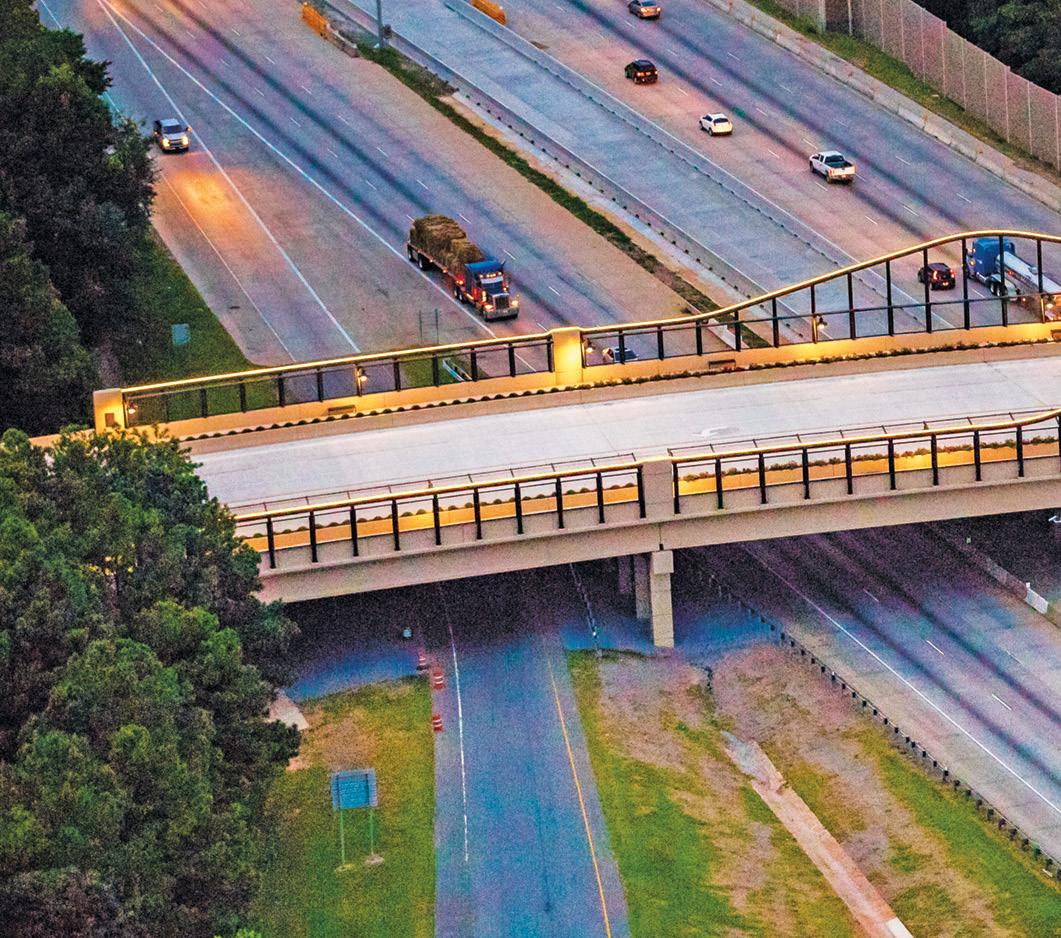
Photos courtesy of Town Center CID Aviation Park
“It is because of this unique partnership that the TCCID and Alliance can create more of these hallmark recreation areas within a region traditionally known more for its office, industrial, and retail,” says
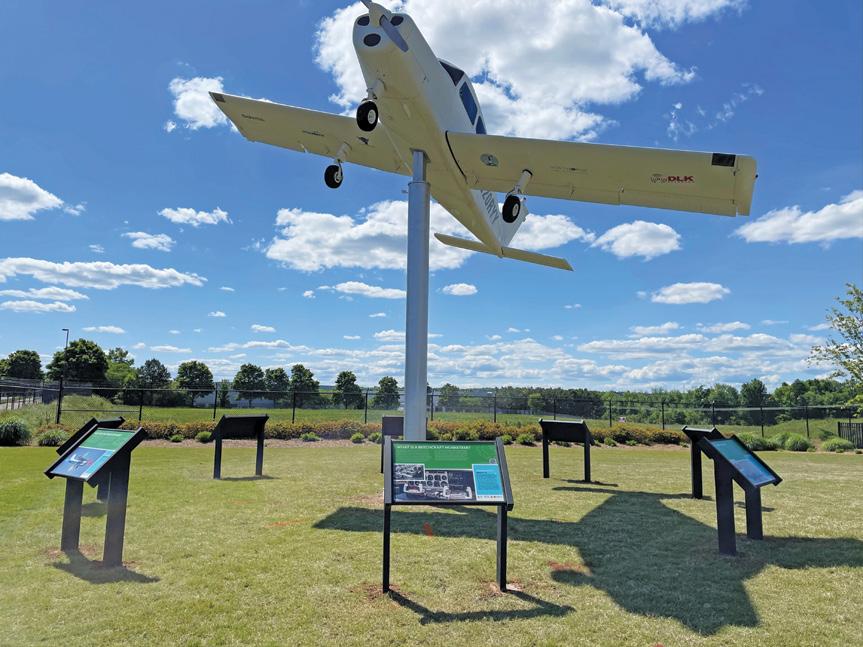
Skip Spann Connector
Happy Trails
The Noonday Creek Trail is a 10- to 12-foot wide, multimodal, hard-surface bike path that runs through the Town Center district, connecting the district’s destinations and parks. It begins at the Kennesaw Mountain National Battlefield Park Visitor’s Center and heads east to the Bells Ferry Trailhead, winding along the creek through forested areas, under highway overpasses, and along roadsides.
The idea of a bike trail emerged in 2000 and took 12 years to complete. What was once underutilized greenspace is now useful infrastructure for alternative modes of transportation and recreation were created.
“The multi-use trail has made Town Center a competitive urban district by enhancing aesthetics, recreation, and connectivity throughout the area,” says Tracy Styf, Town Center CID’s executive director. “This infrastructure is functional as well as attractive. It links to several other trails in Cobb County’s 84-mile trail network, and it improves environmental conditions by protecting the creek.”
More than 200 proposed or planned miles of trail have been identified and are included in the Cobb Greenway and Trail Masterplan. These planned trail connections will continue north into Cherokee County and to the south to the Beltline and Silver Comet Trail.
Outdoor spaces like these were especially important during the pandemic, giving people places to exercise and safely gather in small groups, says Jennifer Hogan, Town Center’s Community Alliance director. “During the pandemic, we saw evidence of increased usage of the trails, via our trail counters, at times of the day and week that, pre-pandemic, were not highvolume hours. This data could indicate that while people were working from home or homeschooling during the week, they were also utilizing the trails and parks at different times of the day and augmenting their daily schedules with time outdoors.”
Hogan says even outside of a pandemic setting, parks and trails are widely considered to be important for health and wellness, giving people options for reducing anxiety, stress, and depression.
Also of value is the potential for reduction in local traffic and the use of the trail as a transportation alternative. Data collected on the Town Center bikeshare program in early 2020, just before the pandemic, showed that since the program launched in November 2015, more than 50,000 rides totaling more than 25,000 hours with a median trip distance of 1.87 miles were taken. Hogan says this would equate to a reduction of 11,000 pounds in CO2 emissions or elimination of over 12,000 auto trips.
Photo courtesy of Town Center CID
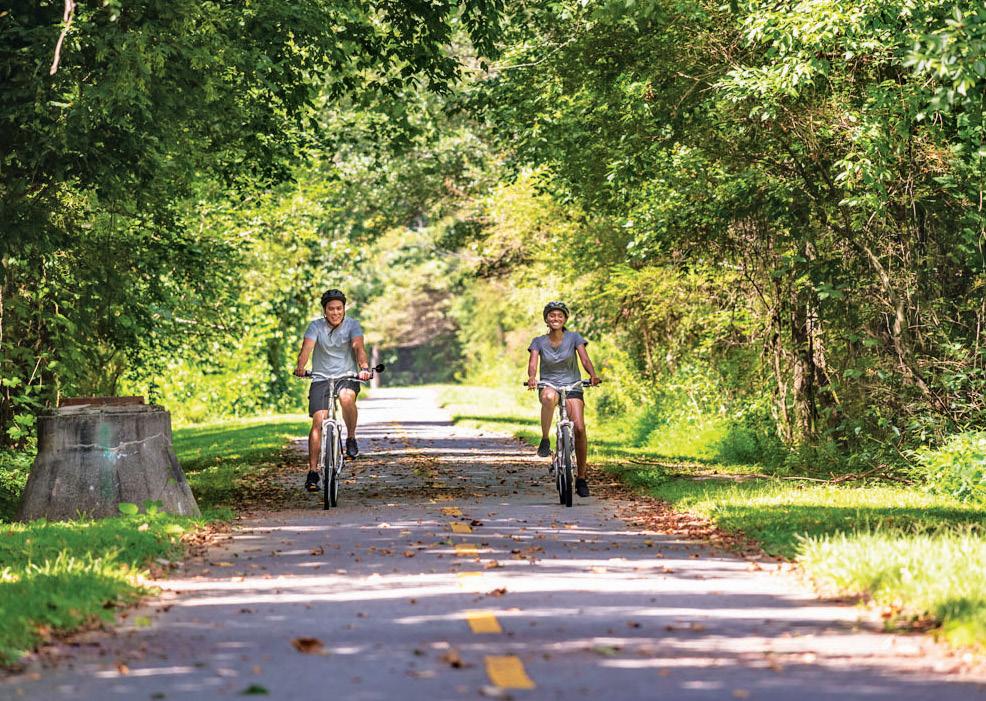
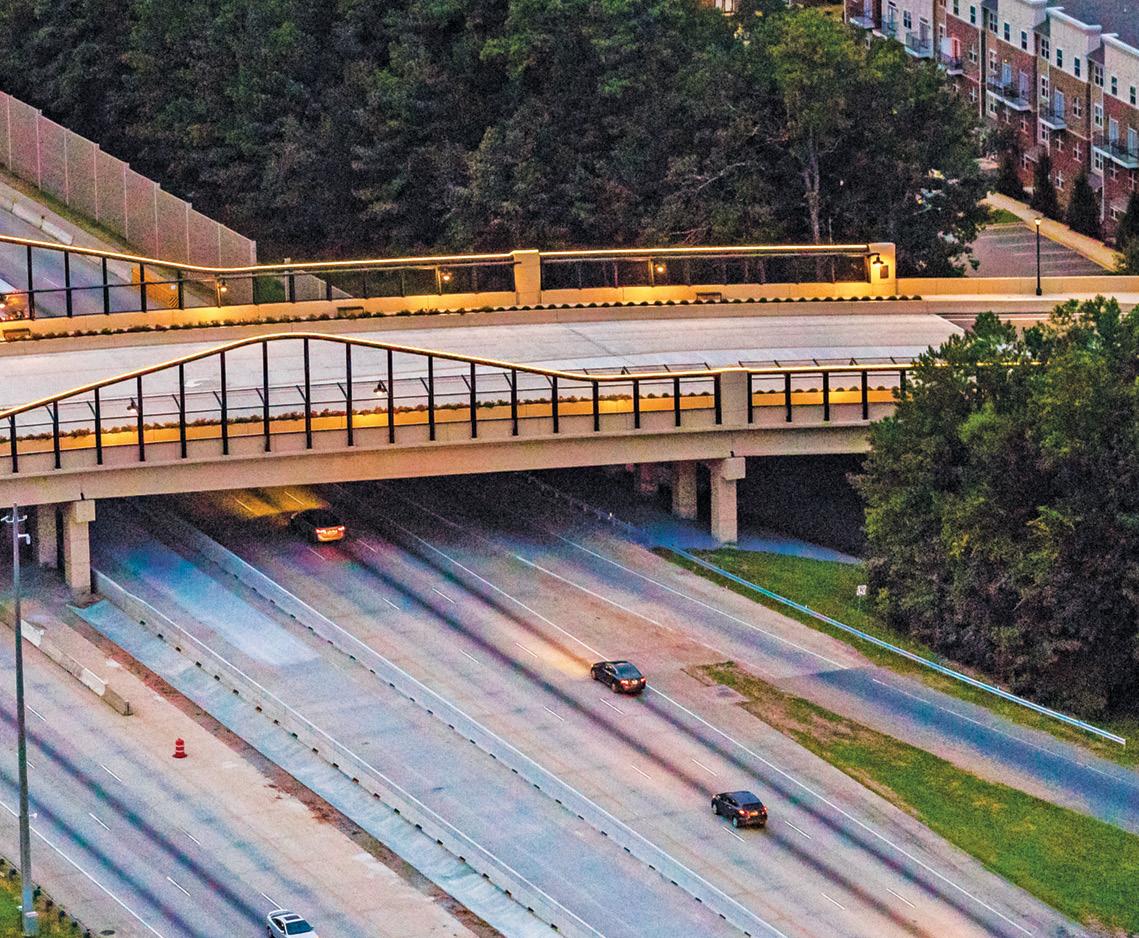
Styf. “These types of projects are important because they improve the quality of life of the entire region.”
Bringing projects to fruition
The TCCID and the Alliance are separate legal entities, and each is governed by a separate board. While the two collaborate and work on projects in tandem, specific projects and budgets are determined by each board, respectively. Both boards use the extensive planning efforts for projects based on the various master, activation, and strategic plans conducted during the last few years. Styf says the TCCID does master planning for the district every three to five years, working with Cobb County, commercial stakeholders, and the broader community to study demographic and economic shifts. The district collects market data as well as data on fiscal impact, traffic, and infrastructure needs.
“We take the results of the master plan, along with the Cobb’s Comprehensive Transportation Plan and Comprehensive Development Plan, to prioritize projects in the greatest areas of need within the district,” Styf says. “Projects are funded initially with CID dollars for concept and preliminary engineering, and then we work with our county, state, and federal partners to secure the remaining project funds and move it through construction.”
Why placemaking matters
By definition, effective placemaking increases the quality of life for residents, commuters, and visitors, and it raises the value of surrounding properties. This creative method of collaboration shapes the physical and social character of a region
Successful TCCID Projects
South Barrett Reliever The South Barrett Reliever is a road realignment project to give drivers an alternate route around Barrett Parkway, one of the busiest corridors in Town Center. In Phase 3, the $33.5M roadway will continue from where Phase 2 ended, then reach across I-75 and the Managed Lanes and extend to Barrett Parkway via Roberts Court. This project won the 2018 Georgia Partnership for Transportation Quality Preconstruction Design Award for Traffic Safety and Intersection Design for Phase II.
Skip Spann Connector The Skip Spann Connector created a four-lane road and 10-foot-wide, multiuse path over I-75, realigning Townpark Lane into a roundabout at Busbee Drive. Its most striking feature is the lighted bridge design that reflects the iconic shape of Kennesaw Mountain. This project won the 2017 American Society of Highway Engineers National Project of the Year; the 2017 American Council of Engineering Companies Georgia Engineering Excellence Award, Transportation category; and the 2016 Georgia Partnership for Transportation Quality Preconstruction Design Award.
Bells Ferry Trailhead The Bells Ferry Trailhead is the district’s easternmost point of the Noonday Creek Trail. In 2017, the area was updated to provide trail-friendly amenities, such as a restroom, parking lot, trash receptacles, bikeshare station, benches, lighting, landscaping, and water fountains for people and pets. Town Center Bikeshare Program The TCCID is committed to bringing cycling to the forefront of mobility and providing recreation options in the district. In 2020, the bikeshare saw 17,115 active members, 229 trips per week and 50,731 total rides. In 2016, the program was winner of 2016 CREATE Community Award.
Aviation Park The vision behind the park was to engage visitors in a beautiful open environment and provide much-needed amenities along the Noonday Creek Trail. The space near the end of the runway at the Cobb County International Airport led to the park theme.
Noonday Creek Trail The Noonday Creek Trail is a 10- to 12-foot-wide, hard-surface path that runs through Town Center, connecting the district’s destinations and parks.
Busbee Trail Busbee Trail is a shared-use path running 0.5 miles along the western side of Busbee Drive.
Big Shanty Connector The Big Shanty Connector is a fourlane roadway that spans nearly two miles, from Chastain Road, heading east under I-75 and the Managed Lanes to Chastain Meadows Parkway.
Noonday Creek Chimney Swift Tower In 2020, the Georgia Audubon and the Town Center Community Alliance partnered to install a 12-foot chimney swift tower along the Noonday Creek Trail.

through arts, culture, and other quality of life enhancements.
“Since 2015, the Alliance has worked to secure funding for the improvement of the Town Center region,” says Hogan, “by investing in projects that enhance the quality of life in the Town Center area, such as parks and greenspace to conserve and protect the environment. Examples include Aviation Park, public art and activation that inspires the community, and programs that actively engage people of all ages.”
Placemaking is creating places where people want to be — public spaces that engage the community and are activated in a way such that everyone wants to use them. A recent example of how the Alliance has invested in TCCID infrastructure projects bringing additional amenities for visitors and residents is the Noonday Creek Trail, one of the most popular amenities in Town Center. Using the existing infrastructure established by the TCCID, the Alliance adopted an activation plan to adorn the seven miles of trail in the district with public art, programming, and creative wayfinding to elevate the trail user experience.
Photo by LaRuche Creative
Town Center Bikeshare Program
Sharing best CID practices
Styf says that with more than 30 CIDs in the metro Atlanta area, they often collaborate with other CIDs to educate and inform communities about collective efforts and the work inside of the districts. “I meet regularly with other executive directors to share ideas and best practices, working on issues that impact each of us, such as ensuring funding at the state and federal levels,” she says. “There’s so much we share and have learned together throughout the years. Right now, much of our discussions are centered around technology and mobility. We are also working locally with the other Cobb CIDs to connect bikeshare throughout the region.”
A number of the metro Atlanta CIDs are working with the Georgia Department of Transportation and their local transportation departments on the Connected Vehicle program. This technology will link more than 1,000 intersections across the region, enabling cars, trucks, and buses to “talk” to each other and share safety and mobility information. The data is then used for transit signal priorities, signal preemption for emergency vehicles and assuring sufficient pedestrian intervals at crosswalks. n
